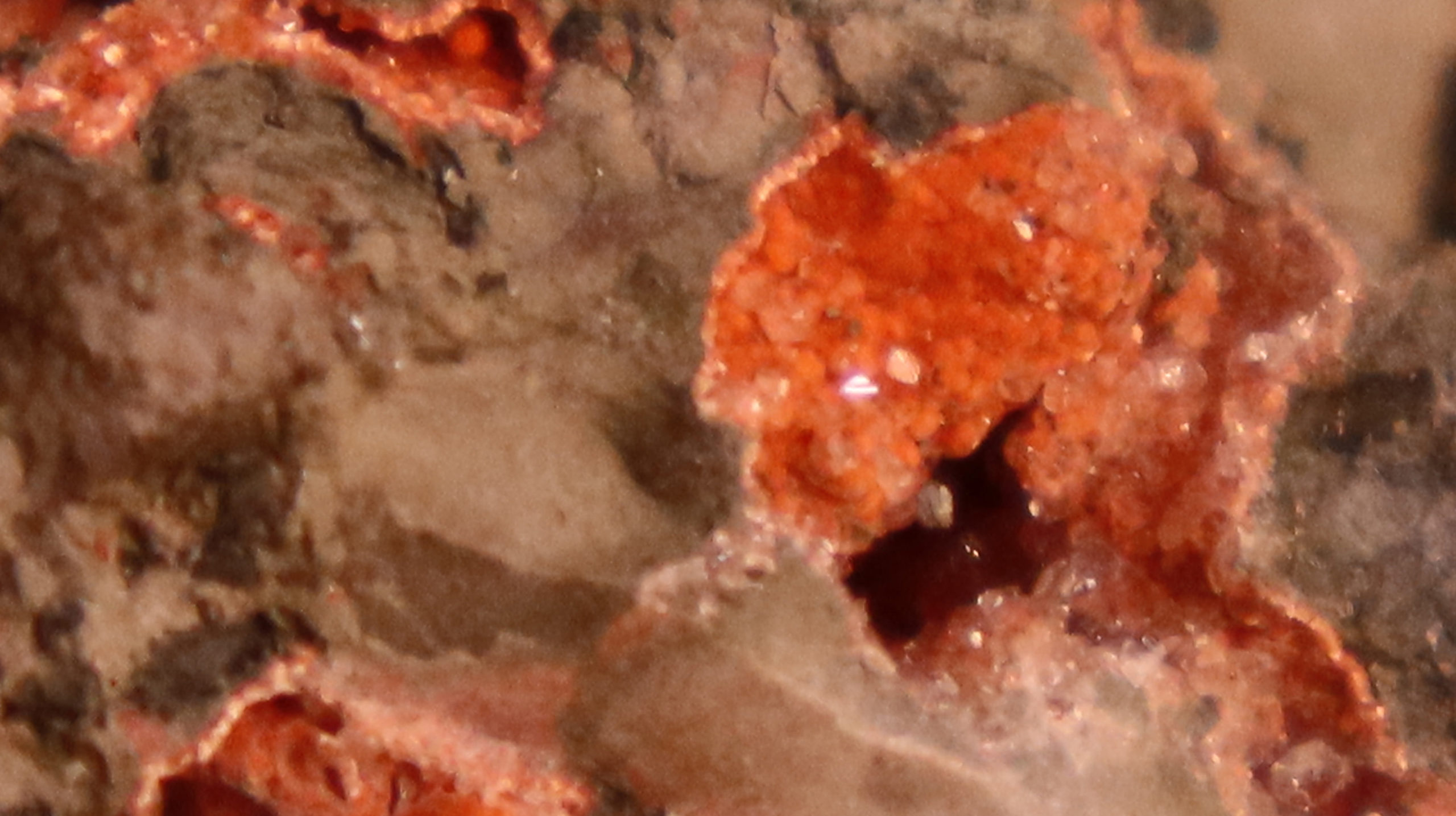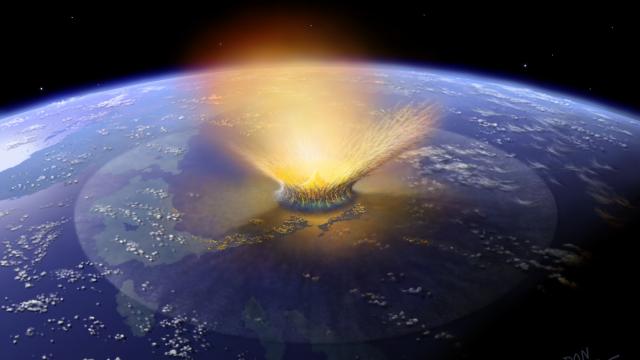When the dinosaur-snuffing asteroid hit Earth some 66 million years ago, it produced a subterranean pool of magma roughly nine times larger than the current caldera at Yellowstone National Park, according to new research.
The Chicxulub impact event of the Late Cretaceous extinguished 75 per cent of life on Earth, including all non-avian dinosaurs, but it also generated an enormous and long-lasting hydrothermal system filled with magma, according to new research published today in Science Advances. Evidence for this was spotted in core samples taken from Mexico’s Yucatan Peninsula, the site of the ancient impact.
The kinetic energy produced by the impact was around 100 million megatons, which is roughly equal to 10 billion Hiroshima bombs. This was enough energy to melt a significant portion of the Earth’s crust, resulting in the magma chamber. This “central melt pool,” as the researchers call it, lasted for hundreds of thousands of years and possibly for more than 2 million years before it finally cooled, according to the paper.
At its peak, the massive Chicxulub hydrothermal system was roughly 3 kilometers thick, encompassing 140,000 cubic kilometres of Earth’s crust. That’s more than nine times the size of Yellowstone National Park’s hydrothermal system.

But whereas “volcanic calderas like Yellowstone are fed by magma from deep within the Earth,” the Chicxulub hydrothermal system was “driven by a massive amount of magma created in the centre of the crater,” David Kring, the first author of the study and a researcher from the Lunar and Planetary Institute in Texas, told Gizmodo.
Scientists had previously suspected a former hydrothermal system existed at the Chicxulub site, but crucial details were lacking, such as its overall size and depth, its effect on the surrounding environment, and its total lifespan.
For the study, Kring and his colleagues analysed chemically altered rocks pulled from the Chicxulub crater. These samples were provided by a drilling expedition led by the International Ocean Discovery Program and International Continental Scientific Drilling Program, which acquired rocks from between 617 to 1,335 metres below the seafloor.

Analysis of these minerals suggests the initial temperature of the magma pool was between 300 and 400 degrees Celsius. During this time, the magma chamber was like a gigantic oven, baking the surrounding crust. The central melt pool was roughly 700 metres below the surface, which is 600 metres lower than previous estimates.
An interesting aspect of this study is how it potentially speaks to the origin of life on Earth. Billions of years ago, powerful meteorite impacts generated hydrothermal clays, which are linked to the formation of RNA, a basic self-replicating nucleic acid and a foundation for life.
“Chicxulub is the largest, best-preserved crater on Earth and is thus our best example of the craters that were produced early in Earth history,” Kring told Gizmodo. “There were thousands of craters its size and larger when life emerged on Earth. There is evidence that suggests that life emerged from hydrothermal systems, potentially produced by impacting asteroids and comets.”
Looking to the future, Kring said his team will analyse additional samples from the 1.3-kilometre-deep core in hopes of uncovering additional details about the Chicxulub hydrothermal system and its potential to host microbial ecosystems.
[referenced url=”https://gizmodo.com.au/2020/05/dinosaur-killing-asteroid-struck-earth-at-deadliest-possible-angle-new-research-suggests/” thumb=”https://gizmodo.com.au/wp-content/uploads/2020/05/28/gcsufxo5of3eckcd0sva-300×168.jpg” title=”Dinosaur-Killing Asteroid Struck Earth at ‘Deadliest Possible Angle,’ New Research Suggests” excerpt=”When the asteroid that wiped out the dinosaurs hit Earth, it struck at an angle that maximized its destructive potential, according to new computer simulations of the catastrophic event.”]
This is the second major paper to come out this week about the Chicxulub impact event, the other being an analysis of the asteroid’s impact angle. The study found that the asteroid came down at a 60-degree angle to the horizontal, which maximized its destructive potential. Kring contributed to that paper, which also relied on data culled from the IODP and ICDP expeditions.
